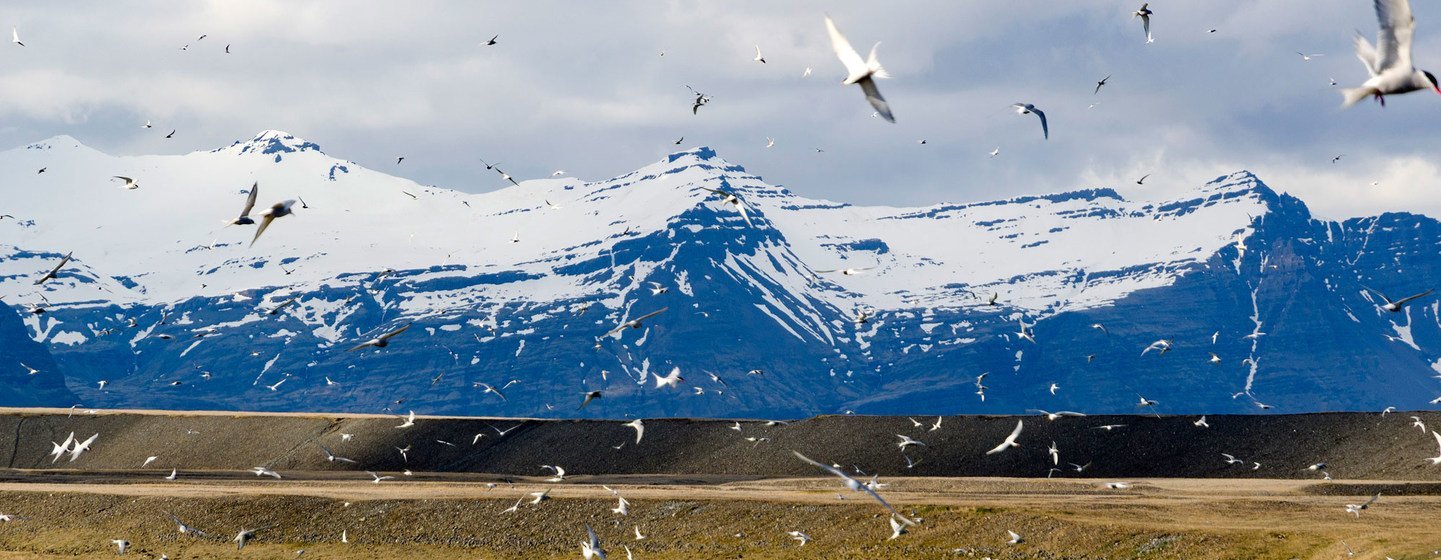Climate change threatens winged harbinger of spring
A sure sign of spring in northern Europe is the arrival of the Arctic tern bird, but ahead of the UN’s World Migratory Bird Day experts fear the warming of the oceans in its nesting grounds in the northern Atlantic is threatening its very existence.
A globe-trotting adventurer
The Arctic tern is a great traveller, and spends most of the year on the move, with long periods over the ocean. Its breeding grounds cover both the northern and southern polar regions. In Europe, during the summer months, it can be found from Brittany in the south, to Iceland, Greenland, and Svalbard in the north.
Come autumn, the terns head south in the direction of Antarctica where they stay during the northern winter. However, they don’t fly directly from north to south, and an individual bird has been known to have covered almost 100,000 kilometres, or twice the circumference of the planet.

A big adventure
“When terns reach Antarctica, they stay close to the ice-brim, and move gradually eastward”, says Guðmundur A. Guðmundsson, animal ecologist at the Institute of Natural History in Iceland. “Swedish and Dutch birds go all the way towards Australia, but the Icelandic and Greenland birds return earlier to the Weddell Sea in the Southern Arctic. From there they set off north in March and up to one and a half months later they reach their destination in our country”.
In the case of Iceland, the terns announce spring in the latter part of April, when they arrive to nest. When the chicks are ready to fledge in August they fly to the south, but not in a straight line, rather in an S-shape trajectory. One of their well-known stop-overs is Cape Town in South Africa in November.
En route to their nesting grounds in Iceland and Greenland they are known to have stop-overs in Brazil and cross the Andes mountain range. “It is a big adventure,“ says Mr. Guðmundsson.

A front row seat at planetary crises
However, he is concerned by the decline in Iceland’s tern population – which currently stands at some 250,000 nesting couples – over the last few decades, with climate change the probable culprit.
Because of the warming ocean, algae are blooming earlier in the year, too early for young sand eels to feed. This means that stocks of sand eel, an important food source for migratory sea birds, have collapsed in the seas around Iceland.
Although the tern is not at risk of extinction in the short term, enough concern has been raised for the bird to be added to the be added to the International Union for Conservation of Nature’s (IUCN) Red List of threatened species.
Inger Andersen the Executive Director of the UN Environment Programme (UNEP), says that migratory birds have “a front row seat to the triple planetary crisis of climate change, biodiversity loss and pollution.”
“Climate change is changing and disturbing the migratory patterns of birds,” adds Ms. Andersen. “The destruction of the natural world threatens these pollinators, critical for food security and well-being. And pollution, whether in waterbodies, land or air, is proving toxic for migratory birds”.
World Migratory Bird Day
- World Migratory Bird Day is held twice annually in the spring and the autumn.
- “Sing, Fly, Soar – Like a Bird!” is the theme of this year’s World Migratory Bird Day, held on 8 May. The Day highlights a global campaign dedicated to raising awareness of migratory birds and the need for international cooperation to conserve them.
- “On World Migratory Bird Day, I call on us to re-double our commitment to addressing the triple planetary crisis and securing the future of the bird song for all,” says UNEP Executive Director Inger Andersen.

